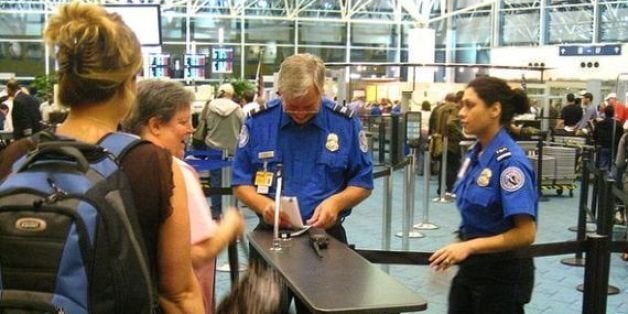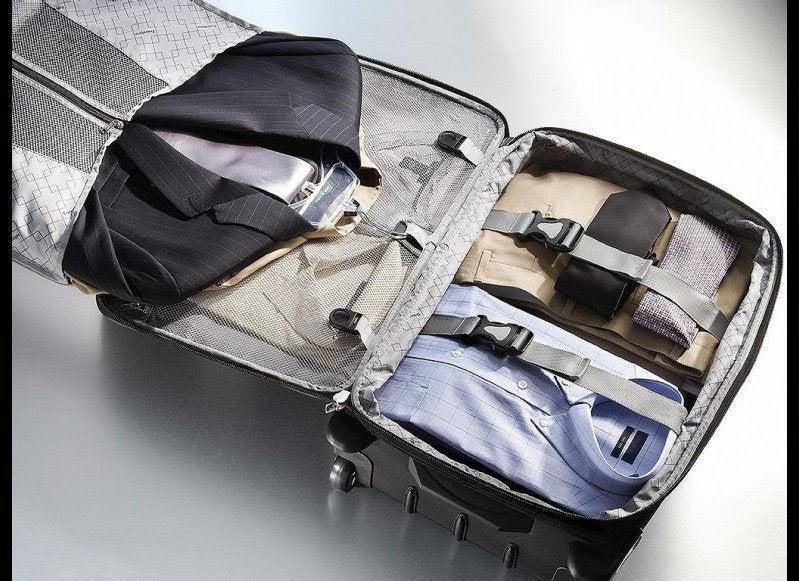
The Transportation Security Agency was created in the wake of the Sept. 11 terrorist attacks in an effort to strengthen airport security and prevent similar events in the future. Flash forward to present day: Security checkpoint lines can be endless, inexperienced travelers can slow things down and screaming children can turn the process into a nightmare. But while some travelers view it as an inconvenience or just another obstacle in the way of their next vacation, airport security is a serious matter.
To get the scoop on what a job in airport security entails and everything travelers should know to keep their security screenings quick and painless, U.S. News spoke with TSA spokesperson Lisa Farbstein, Anthony Hutchinson, a Transportation Security Officer at Ronald Reagan Washington National Airport, and William Covieo, a TSO at Washington Dulles International Airport.
TSA agents' skills are tested regularly
In addition to undergoing several weeks of training prior to starting their jobs, plus another month or so of on-the-job training with an officer, TSA agents are tested on a daily basis, according to Hutchinson. He said advanced technology forces them to keep their skills sharp and their eyes peeled for threats.
"On the X-ray machine, there's a program that's built in to the system that allows us to be tested ... to make sure we're looking at the screens," said Hutchinson, who's worked as a TSA agent at Reagan National Airport for nearly 11 years. "We never know when [the alert] is coming through, which is a great thing because it keeps us on our toes."
TSA offers tools to help you breeze through security
The TSA provides seasonal checklists travelers can consult to prepare themselves before arriving at the airport. For example, the summer checklist implores fliers to make sure any luggage locks are TSA compatible, to not pack fireworks in checked or carry-on luggage as they are not permitted, and to have an ID and boarding pass ready for inspection before entering the TSA checkpoint, among other tips.
The free My TSA app for smartphones also offers numerous features to aid in a smoother security screening process. Fellow travelers can input security line wait times and you can check to see if there are general airport delays ahead of time. Plus, the "Can I Bring ..." search function allows you to type in an item and "right away you can figure out if you can put it in your checked bag, your carry-on bag, either or neither," Farbstein said.
Knowing and following the 3-1-1 rule will make your life easier
The 3-1-1 rule refers to the amount of liquid, gel, aerosol, cream or paste (most often travelers' toiletries) allowed in a carry-on bag: it's 3.4 ounces or less per container, placed in one quart-sized clear plastic zipped baggie. Remember: this rule applies to various items of the same consistency, not just toiletries. One of the most common items people don't realize they can't bring through airport security? Peanut butter.
"When we're talking about liquids and gels, if you can spread it, smear it, spray it, spill it, pump it or pour it, then you should put it in your checked bag," Farbstein said.
They don't want to slow you down
"We really don't want to have you there sitting at the checkpoint with us, we want to see you for that two to five minutes ... and we want you to be done," said Hutchinson.
Travelers who typically don't prepare before coming to the airport are often culprits for slowing down security lines, according to Hutchinson. Making sure you're a prepared flier, including wearing easily removable shoes, arriving at the airport early, using the TSA checklists and following the airport advisements, will help you speed through security and on to your final destination.
You can decide what to do with your prohibited item
In the event that you have a prohibited item like a pocket knife in your carry-on bag, the TSA officers don't take it from you or throw it away. According to Farbstein, fliers have a few options.
Travelers can put prohibited items back in their cars, in their checked bags or give them to a nontraveling companion. An issue many passengers face, though, is whether they have enough time to do so and make their flights. "Your final choice is to voluntarily surrender it to TSA," Farbstein said. (Note: Some prohibited items are illegal in certain states, and can be confiscated by police.) Consult the TSA's website for more information on prohibited items.
The TSA runs an extensive lost and found operation
TSA officers across the country interact with about 2 million travelers on a daily basis, some of whom are rushing to catch a plane or a bite to eat before their flight takes off. Stressed fliers often leave belongings behind at security checkpoints and some may not realize the TSA collects and catalogues all of those abandoned items. Sunglasses, belts, loose change, jackets and hats are some of the more common things people forget to grab after going through security screenings. But Farbstein and Covieo said they've seen some pretty incredible items, such as a guitar, laptops and tablets, a blueprint of casino plans and even a diamond encrusted watch, get left behind or lost in the travel shuffle.
TSA agents collect the abandoned items, tag them by the checkpoint they were left at and the date, and organize them by item type and by month in hopes of making them easy to locate when a traveler inquires about a lost object. Items are held for 30 days, after which the state picks them up and either takes the items to general surplus facilities or sells them online. The only thing the TSA gets to keep is the loose change, which adds up. In 2014, TSA collected more than $670,000 in unclaimed money, which goes directly back to TSA to use for aviation security operations.
If there's a chance you may have left something in an airport at a TSA checkpoint, visit the TSA's contact list to find the best way to get in touch with that airport's TSA lost and found. Covieo asks about travel dates and has travelers provide a detailed description of lost items and where they were left to determine if TSA would have them, before checking the stockpile. If it's not something left at security but rather in the airport or at the gate, he directs people to the airport or airline's lost and found.
TSA officers encounter challenges ... and deal with them
Some of the challenges TSA officers face include everything from handling an influx of travelers around the holidays to dealing with kids frightening passengers by continuously yelling "that's the bomb," all while staying focused on screening for potential threats.
"We've got to be right all the time. And that's one big thing about our job people probably don't understand ... there's not one time we can be wrong," Hutchinson said.
One of the most difficult parts of the job is helping people who don't travel frequently, Hutchinson said, adding that officers have to figure out a way to move these travelers through security quickly and efficiently without slowing down other passengers.
"It adds frustration on the frequent fliers to get through the checkpoint, so it's hard to try to keep that calm," he said. "Because the one thing we love is to have a calm environment ... it helps us to see bad people when they are coming through."
Hutchinson's best overall advice for travelers? "Relax. The one thing that happens a lot is people get agitated when they travel. Relax and understand we're there to help you, we're not there to be in your way."
Erin Shields is a Travel Editor at U.S. News. You can follow her on Twitter, circle her on Google+ or email her at eshields@usnews.com.
Also on HuffPost:
